 |
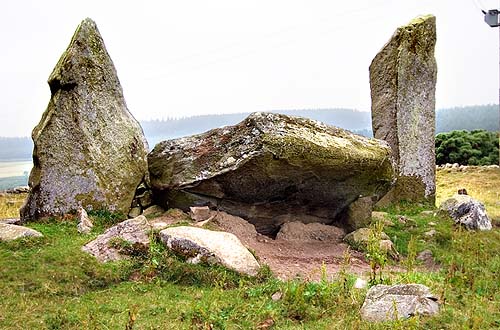 |
|
| Inner face of the recumbent and flankers. | ||
Proceedings of the Society of Antiquaries of Scotland, 34, p.188-95, 1899-1900.
As usual, Fred's
illustrations are of a very high standard, with the possible exception of the
two tiny people beneath the recumbent
in the first engraving. His illustrations easily stand comparison with our
modern photographs.
 |
 |
|
| Inner face of the recumbent and flankers. | ||
 |
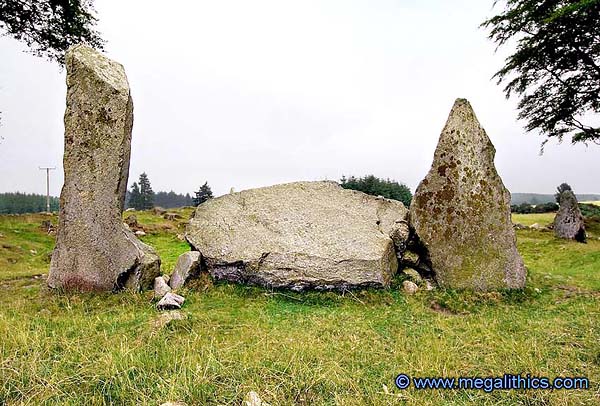 |
|
| Outer face of the recumbent and flankers. | ||
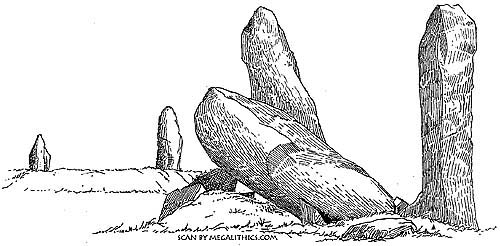 |
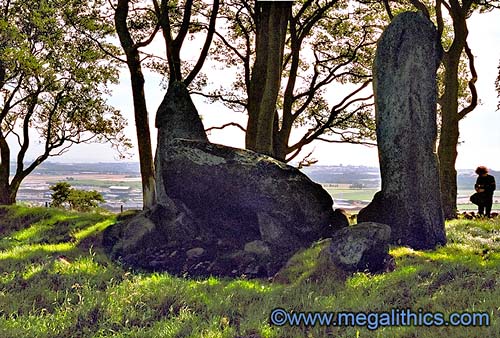 |
|
| Recumbent and flankers from the NW, the angle of our photo is slightly different, so the two circle stones are not in shot. | ||
Archaeologia, 22, pl,XXIII, p.200, 1829.
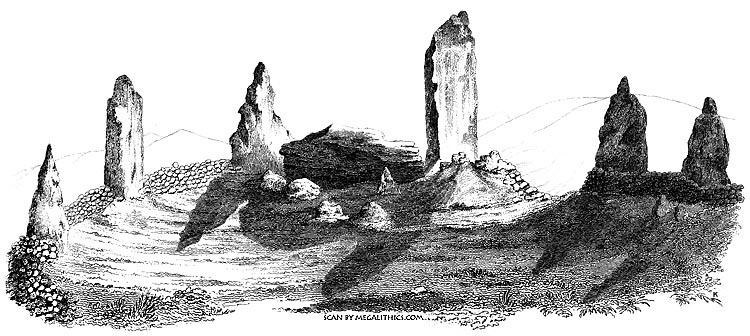
Logan's view of the circle
from the north.
Note the dry-stone walls joining the stones, this is especially visible at the
east (left). The circle had been pressed into
use as a cattle pen, the walls sealing the gaps between the stones. What
is interesting is that the walls stand on banks,
suggesting that the banking was an original feature. Unfortunately, the view is
not wide enough to include the
"morphing" eastern stone so we have no record of its shape at this time.
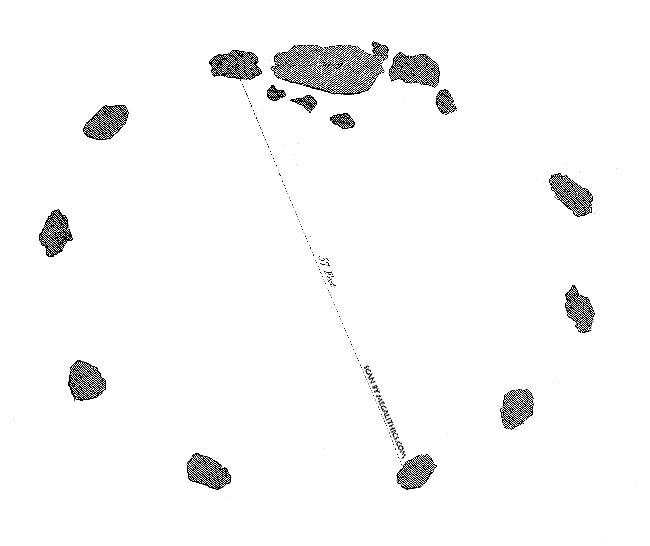
Logan's plan of the circle.
Logan shows the circle as being an ellipse, when it is in fact a true circle,
the recumbent and flankers are set back within
the circle traced by the other stones and this may have influenced his
drawing. Note the third stone from the flanker on the
east side (left), this is the stone that is sometimes shown as single, double, or
absent. Although Logan's view above does
not include this stone, if its outline in this plan is accurate, it certainly bears no
resemblance to the stone we saw in this location
in 2004.
The text components of the engraving have not reproduced well, The diameter is
given as 57 feet and the
recumbent length
is given as "10.9".
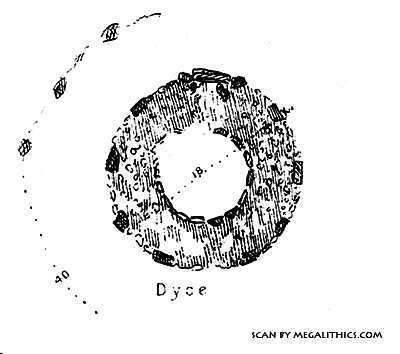
Macalagan's plan of the
circle includes measurements, a "12" being hidden in the ringcairn illustration,
this would give a diameter of
42 feet, or 12.2m for the circle stones, this does not compare well to modern
measurements of 18.1m. Similarly, the locations of the circle
stones do not match present day positions, especially in the north to SE
section. Note the partial outer ring, with three large stones shown
at the SW (south is up), these are not present today and only a vague suggestion
of a low bank remains.
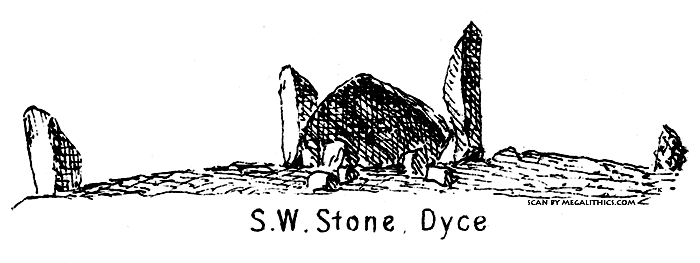
Although described as the
"SW. Stone", the recumbent at Dyce actually sits near to due south. The
distinctive shape of the western flanker is
depicted well, but the portrayal of the eastern stone is not as good as that in
Logan's earlier drawing above.